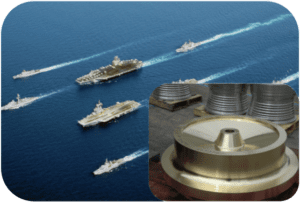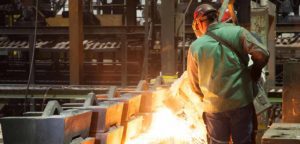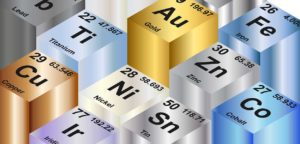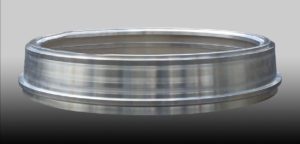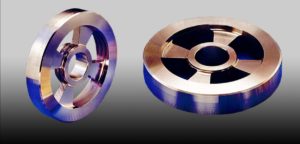Blog Archives
Tool steel alloys are high carbon chrome steels containing differing amounts of molybdenum, cobalt and/or vanadium or other elements. Certain tool steels are engineered to withstand repeated high specific loads and impacts at ambient temperature with exceptional wear resistance – thus the name. Other materials in the family will exhibit stability at elevated temperatures and…
Read MoreThink of a problem that you face in metal component design or application. Here are some examples of where leveraging the advantages of centrifugal casting have helped MetalTek and a customer work together to solve an application challenge. Maybe you will see a problem you are working to resolve. For more information regarding any of…
Read MoreGrade Ferritic Stainless Steels. Description Stainless steels owe their ability to resist corrosion primarily to the presence of a passive film on their surface, chiefly caused by the presence of chromium. Iron ceases to rust at approximately 12% chromium content and resistance to oxidizing corrosives increases rapidly with chromium content up to about 20%. Beyond…
Read MoreThink of a problem that you face in metal component design or application. Here are some examples of where leveraging the advantages of continuous casting have helped MetalTek and a customer work together to solve an application challenge. Maybe you will see a problem you are working to resolve. For more information regarding any of…
Read MoreGrade Ferralium® 255 (J32550 / Licensed by Langley Alloys) Description Proprietary high strength duplex stainless steel Duplex Stainless Steel Material Properties – Why select this material Outstanding corrosion and erosion resistance Twice the strength of common austenitic stainless steels Reduced section sizes because of strength may reduce weight. Highly resistant to chloride stress corrosion cracking…
Read MoreGrade MTEK 844 (C84400) and MTEK 85-5-5-5 (C83600) Red brasses Description General utility alloys where reasonable strength and non-corrosive properties are demanded. Mechanical Properties of Red Brass – Why select this material Relatively light loads. Good lubrication is possible. Excellent machinability. Applications – Frequent uses Air and gas fittings, pipe fittings Faucets General hardware…
Read MoreGrade Nickel Aluminum Bronze Alloys Description This group of alloys contains nickel and is primarily selected where a combination of high strength, corrosion resistance and resistance to cavitation and erosion damage is required. Nickel Aluminum Bronze Material Properties – Why select this material Alloys of both the aluminum bronze family and the nickel aluminum bronze…
Read More
